The first planet to be discovered using a telescope has an oddly featureless view. Most of our limited knowledge of Uranus (and the incredible featureless picture below) comes from a single flyby mission by the Voyager 2 spacecraft in 1986.
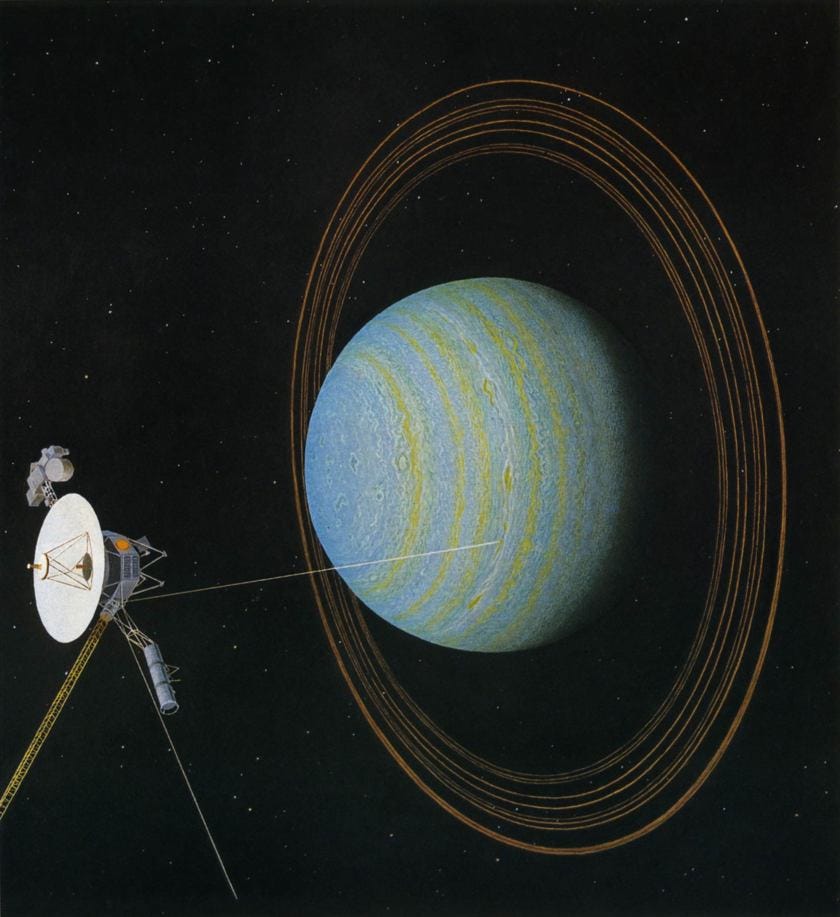
Uranus has some surprising features that are not well understood:
#1: Uranus is tilted on its side
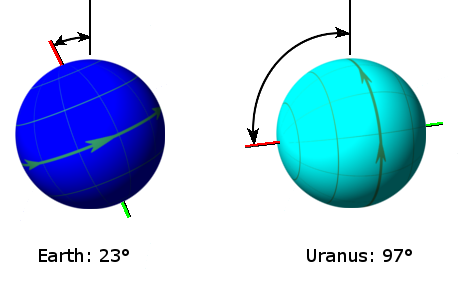
While most planets go around the Sun like a spinning top, Uranus goes around like a rolling ball. Uranus is titled 98 degrees on its side making the poles directly face the Sun. It is suspected that a past collision with an Earth-sized planet caused Uranus to tip on its side.
#2: Uranus has very little heat of its own
Uranus emits about as much heat as it absorbs from the Sun, meaning it has very little heat of its own. Other planets like Jupiter and Saturn for example, emit more heat than they receive from the Sun, as shown in the figure below:
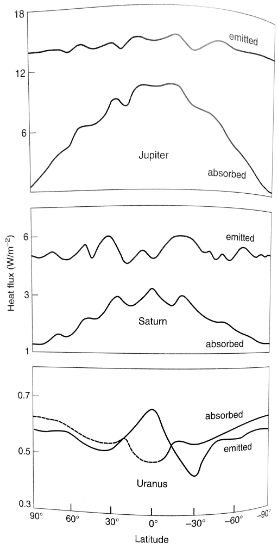
Heat absorbed (from the Sun) vs. heat emitted by the planet.
Even the similar-sized Neptune has much more internal heat than Uranus does, making Uranus the coldest planet in the Solar System. As to why Uranus has so little internal heat is not known yet. It is possible that the supposed past collision with an Earth-sized planet would have expelled a lot of Uranus’ heat in the process.
#3: Uranus has unusual weather patterns
With very little internal heat, it is expected that weather patterns on Uranus are driven primarily by sunlight. Increase in atmospheric activity and storms is expected during the equinox — when the equator of Uranus faces the Sun directly. To everyone’s surprise, 7 years after the equinox in 2007, 8 massive storms were observed on Uranus. The largest of those storms was about half the size of the Earth.
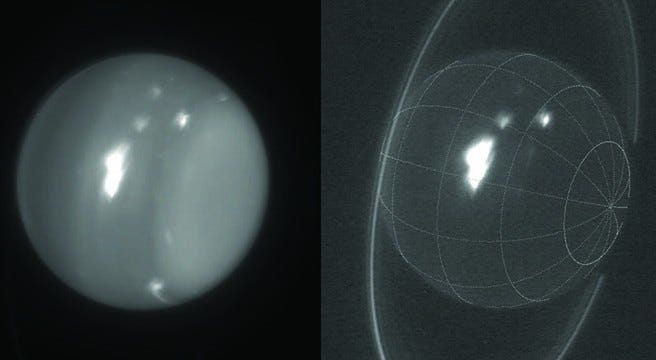
Infrared images of Uranus taken on Aug 6, 2014, using adaptive optics on the 10-meter Keck II telescope. The white spot is an extremely large storm that was brighter than any feature ever recorded on the planet. Source: NASA
Such unexpected activity clearly shows that something is happening on Uranus that we don’t understand. That Uranus is more active than what our current models tell us.
#4: Uranus has a weird magnetic field
The magnetic field of Uranus does not originate from its geometric center. Moreover, unlike the Earth’s magnetic field which mostly aligns with its rotational tilt, the magnetic field of Uranus doesn’t.
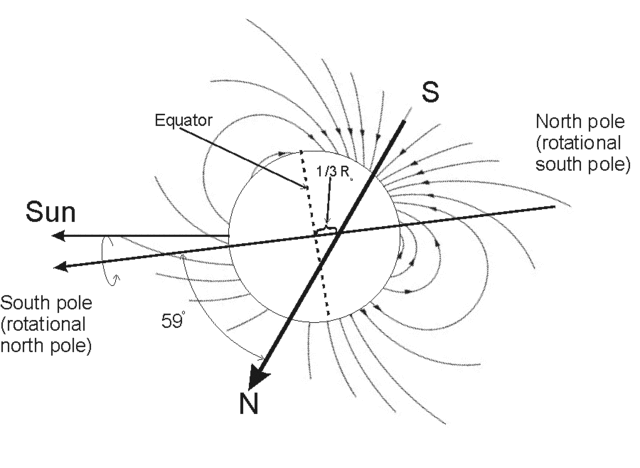
The unusual magnetic field of Uranus, as determined by Voyager 2 during the 1986 flyby.
Having the planet spin in a different direction to the magnetic field causes the magnetic field of Uranus to tumble every day, acting as a repeating ON/OFF switch for charged particles from the Sun. As to why the magnetic field is displaced off-center and titled with respect to the planet’s rotation axis is not known yet. But the fact that Neptune too has a displaced and titled magnetic field means that the answer might have to do with the general composition and internal structure of such Ice Giants.
Why we need an orbiter around Uranus?
A 5-day flyby mission can only tell you so much about a planet. Moreover, remote observations are not sufficient to help understand the various mysteries surrounding Uranus. Putting an orbiter around Uranus (like the ones around Jupiter and Saturn) will help us not just understand Uranus but also the past of our Solar System. The fruitfulness of understanding Ice Giantslike Uranus/Neptune goes beyond that. Have a look at this graph showing the number of exoplanets discovered of each type:
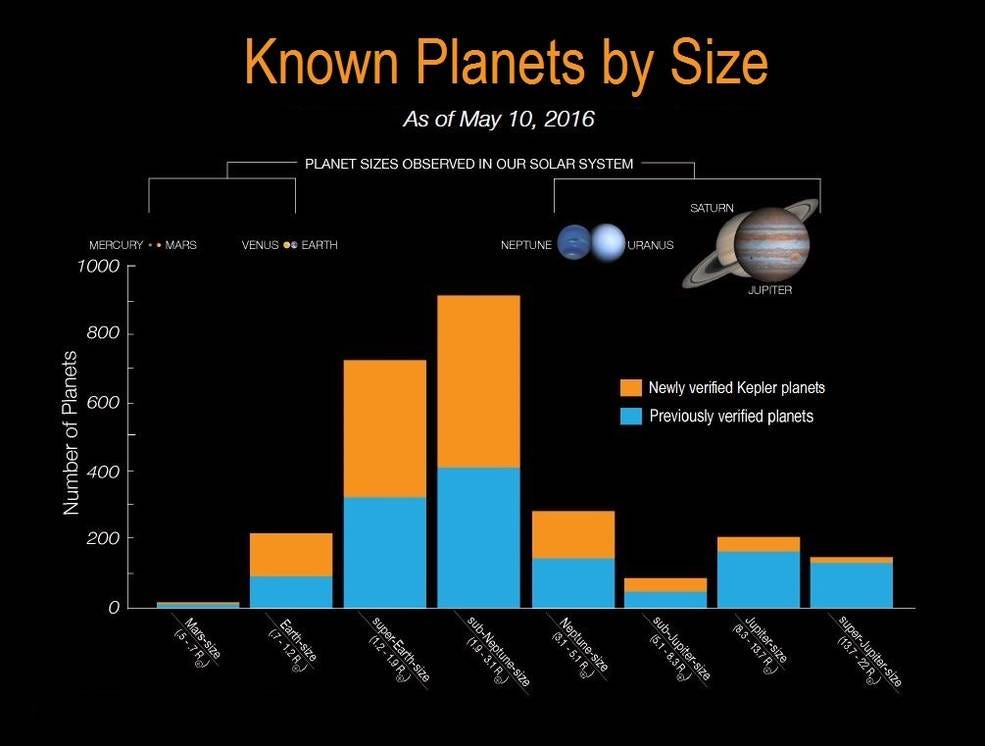
A histogram showing the number of exoplanets discovered by each type. The blue bars represent previously verified exoplanets and the orange bars represent Kepler’s newly verified planets as of May 2016. Source: Wikipedia
The category of planets called Sub/Mini-Neptunes are the most common type as per our observations. Understanding Uranus & Neptune is thus the key to understanding how a giant fraction of all planets form and behave.
The good news is that a Uranus orbiter+probe is proposed to be launched in the 2030s.
